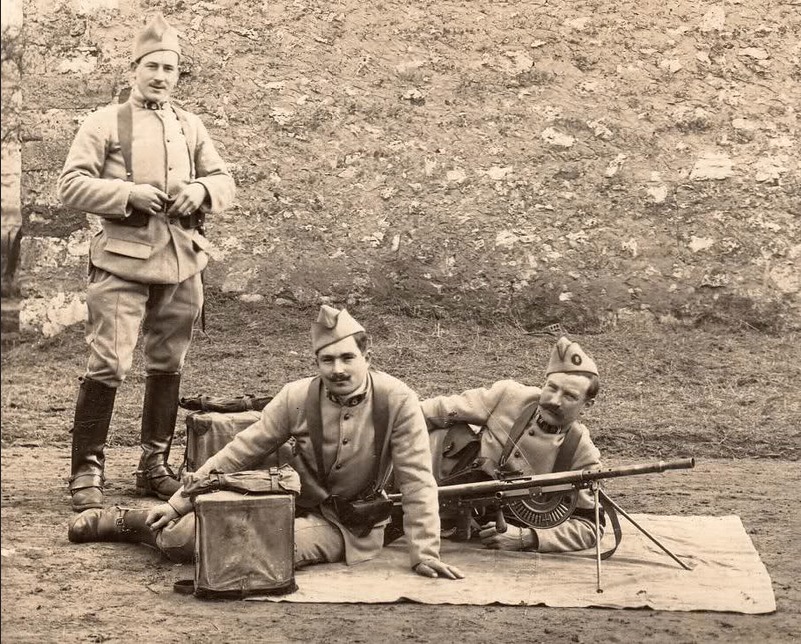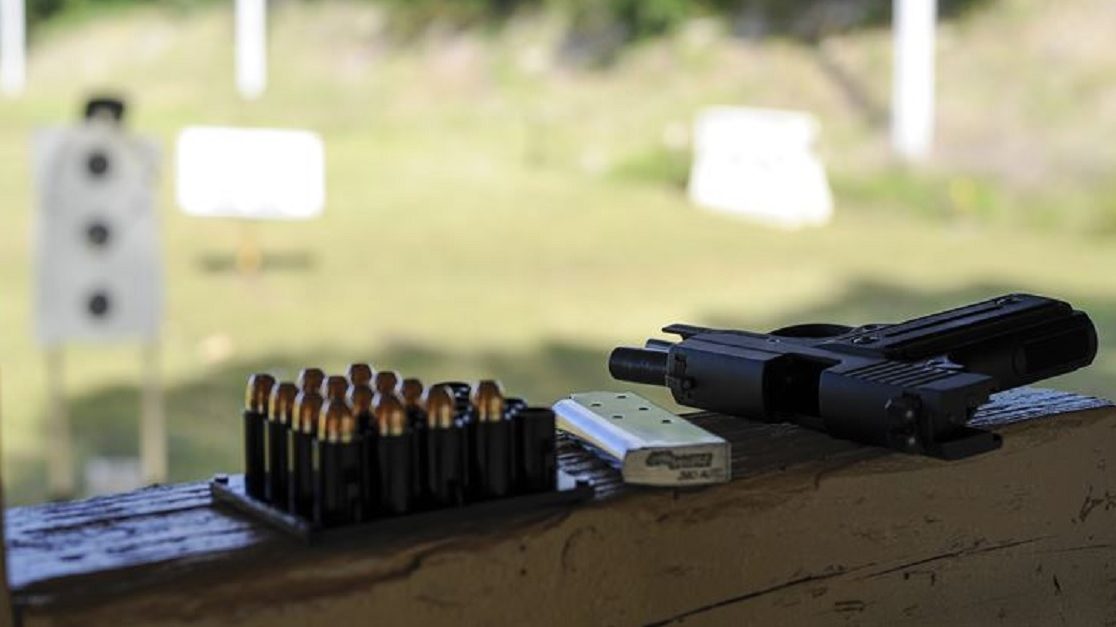
Image courtesy of Oberst 2013
Growing up in the ’90s, reliable sources of firearm information were scarce. Guns and Ammo, American Rifleman, and Tales of the Gun on the History Channel are about all I can recall.
Diversity of opinion was rare, and one thing they seemingly all agreed on was that the 1915 Chauchaut was the worst firearm ever fielded by France, the United States, or anyone. It was always the go-to example of failure.
The internet has allowed for a bit more heterogeneity, but a quick web search on the Fusil Mitrailleur Modele 1915 CSRG will still find a near consensus that it was trash.
Was it so horrible it functioned only to get French and Americans killed, or were its drawbacks manageable, and within the proper context, could it even be called a revolution in firepower and mass-manufacture?
Most information for this article has been derived from Honour Bound, by Yves Demaison, Gerard & Buffetaut.
In Belgium and France, the French infantry entered the First World War without a lightweight select-fire weapon.
The army quickly realized they needed a man-portable platform that could deliver automatic firepower, particularly on offense. There were options out there, such as the Madsen, Hotchkiss M1909 Benét–Mercié machine gun, and the Lewis gun, but these were heavy and required costly, complex machining.
Like all the major powers, the French needed a lot of guns, but particularly light automatic ones for their outdated tactic of massed infantry offensive.
This technique was heavily reliant on elan, that aforementioned massed infantry offensive, and was thought to require significant numbers of weapons that could be utilized for their concept of “walking fire.” Laying down suppressive fire more or less from the hip on enemy positions while marching through no man’s land.
A solution was seemingly available in the small batch of Chauchat-Sutter machine rifles utilized by other French service branches.
These guns were the output of a ten-year development project led by Colonel Louis Chauchat. One hundred were made just before the war, the majority of which mounted to aircraft. The French infantry then adopted them in 1915 as the Fusil Mitrailleur Modele 1915 CSRG.
The CSRG design was unusual. Only 20lbs, it utilized a long-recoil action related to the Remington model 8, and the operation gave it a slow cyclic rate of 250 rpm.
The 8mm Lebel cartridge had a severe double taper that necessitated a half-moon detachable magazine even with a paltry 20 rounds. This magazine also had extensive open cuts in the side to allow the user or assistant gunner to assess the remaining ammunition.
Though effective within the relatively sterile confines of an aircraft, the French infantry quickly recognized the limitations of the 1915 CSRG in the hell of the trenches. For one, despite the low rpm, the barrel and barrel sleeve’s composite design allowed it to heat and expanded differentially under sustained fire and thus fully bind the action.
Without a forward assist or cocking handle directly attached to the bolt, there was nothing to do but wait for it to cool, beat it on a tree, or pour any convenient liquids on it.
Worse, the magazine’s massive open cuts allowed ingress of mud and debris that caused the majority of stoppages. Lastly, despite innovations like a pistol grip, its ergonomics were admittedly terrible, and it required the shooter to fire from a severe angle to avoid a jarring beatdown to the user’s face.
That said, it worked. It had modern features many years before the introduction of the m1918 BAR. It was lightweight, and perhaps most impressively, the manufacture was simple. It utilized premade rifle barrels, aluminum castings, sheet metal, a tubular receiver, and many screws.
According to Honour Bound, this thing was also cheap at only around $2,000 in today’s dollars. If we use the silver dollar as our standard, other LMGs of the era like the Lewis gun cost up to $23,500, and even the simpler BAR cost the equivalent of around $8350 when it debuted in 1918.
What’s more, the companies that produced the CSRG, Gladiator, and Sidearme were not involved in the war effort at that time, so its manufacture required no loss of industrial output.
When the American Expeditionary Force joined the fray in 1917 without significant numbers of automatic weapons, they wanted in. Indeed, a number of Chauchat were adapted to 30-06 as the 1918 CSRG. Admittedly, these guns may have well been the least effective weapon of all time, even according to noted French weapon enthusiast Ian McCollum at Forgotten Weapons.
Many articles online attribute this to the “more powerful” American M1906 cartridge. But if you look at the loadings of the era, 30-06 and 8mm Lebel are relatively comparable in terms of energy and pressure, at around 25-2700 ft/lbs and 50,000 PSI.
Further, it was almost simultaneously adapted with almost no other changes to the higher power 7.65 Mauser without issue by the Belgians. (This was utilized Belgian service until the mid 30’s, no less). The strength of the operating system seems not to be the issue.
Instead, the caliber conversion process itself was the problem. The chamber was reamed so poorly, the tolerances so rough, that almost all of the few examples that passed inspection were used only for training.
They jammed endlessly and the magazines were as fragile as fragile could be. It is here, on the range, where the impression of its extreme unreliability may have made it into the American consciousness.
Despite American mythology to the contrary, the French Army knew what they were doing, and if the original 1915s were worthless, they never would have made 240,000 of them when better options were out there. What’s more, as you can see in many modern videos, even the 100-year-old examples function quite reliably if maintained.
Further, during and after WWI, it was used by at least 20 countries in a variety of calibers. To me, its service history all but proves it.
The massive advantage of very cheap sustained firepower carried by one man overwhelmed the design’s drawbacks.
The CSRG 1915 worked if taken care of, was many times simpler and cheaper than any alternative, was available, and finally, many used it and deployed it through 1940 in some cases.
In a world with guns like the execrable Breda 30 and the hulking M1919A6 in service even 25 years later, to call it the very worst LMG is an example of a conflation of the 1915 and 1918 CSRG, anti-French military bias, and a misunderstanding of the proper context.


